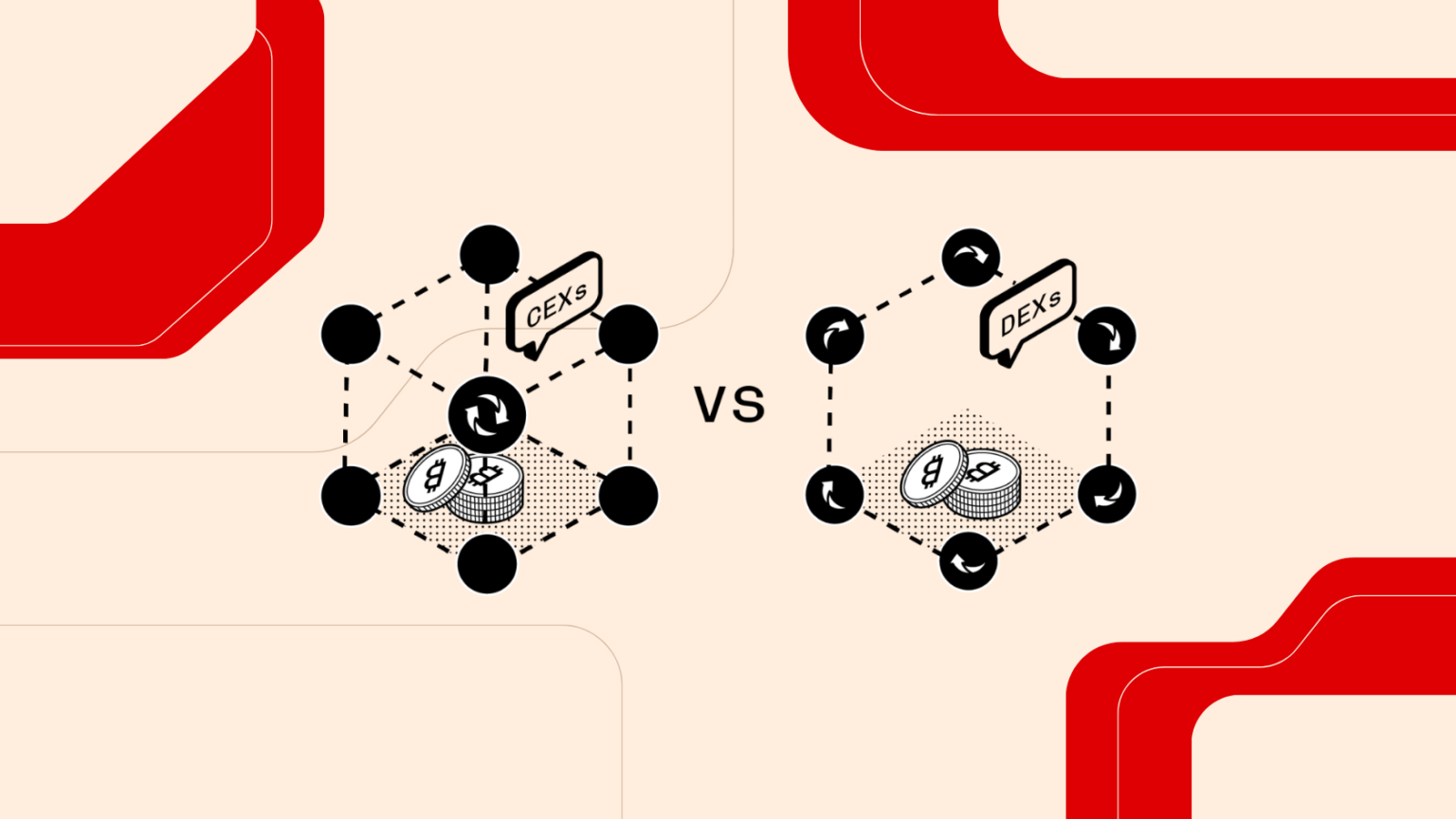Many arguments are put forward as to why centralized exchanges are the best places to go when trading or buying crypto. Protection for performing transactions wholly and safely, monitoring and security are touted as the primary reasons by CEX advocates. However, looking back, it is difficult to resist the conclusion that centralized crypto players are hard to trust.
Some might cynically quip that nothing has changed, yet millions of consumers bought into the too-big-to-fail narrative and had to learn the bitter lesson the hard way. From the failure of the FTX exchange to the insolvency of crypto lender BlockFi, the crypto space has seen several demolition balls thrown at it in 2022.
While the crypto sphere has suffered substantial reputational damage, it is still rolling forward. And there’s no better time than now to emphasize the discrepancies between centralized and decentralized entities.
But what is a DEX or a Decentralized Exchange?
DEXs are a type of cryptocurrency exchange where users can swap the desired crypto token with their peers without the involvement of any intermediary. Essentially, these crypto exchanges enable customers to securely purchase cryptocurrency without the hassle of signups, KYC and any waiting periods. A decentralized crypto exchange abandons the role of the third party in trading.
It employs automatically executed Smart Contracts to make it easier for people to exchange digital assets. Without a central organization controlling trades, DEXs employ “automatic market maker” protocols to fix asset prices.

Inner Workings of a Decentralized exchange
The “constant product” mechanism is a common approach that bases pricing on the ratio of the total reserves of each involved asset on the DEX. It has the advantage of keeping the reserves in relative balance because any asset would become very expensive if it were scarce.
DEXs usually offer similar prices to CEXs for assets. Built on a non-custodial framework, a DEX gives you control over the private key and a digital wallet that you own. Holding your own assets adheres to crypto’s value of self-custody. They are entirely under your sole and total control.
Nevertheless, if the user doesn’t take proper precautions, private keys could be misplaced or destroyed, rendering the associated assets unrecoverable.

Welshman James Howells lost access to 7,500 bitcoins worth over $100 million in 2013 after he mistakenly threw away a hard drive.
DEXs gaining in popularity
Market instability brought on by the FTX fallout sparked concerns over the security of user funds and has driven regular traders away from centralized exchanges.
The trade volumes on the top CEXs more than halved in just a week following the crisis, sinking to $100 billion. Many Central Exchanges rushed to reassure investors. They began to present proof of reserves, but it is regrettably less trustworthy than the blockchain.
The decentralized and transparent nature of DEXs is the likely antidote to the damage done by the FTX fiasco. Even if centralized exchange trading volume climbed later in November, decentralized platforms benefited the most: DEXs trading volume in November exceeded $91 billion compared to October.
Many users had little choice but to abandon centralized platforms after FTX’s demise, de-risking from CEXs to on-chain. Numerous users found withdrawal freezes transpired during the FTX tragedy under FTX or SBF supervision. This issue is one of the most crucial ones addressed by DEXs.
When using a DEX, the user has the private key for the wallet. In other words, the user has the master key of his funds. However, in the case of CEXs like FTX, Binance and others, CEXs have complete control over the master keys.
The cornerstone of the CEX business model, like every financial institution, is trust. It guarantees to protect deposited assets while collecting a fee on buyer and seller transactions. A CEX typically fails because it either misused funds or couldn’t build a sustainable business.
The unscrupulous behavior of Sam Bankman-Fried (FTX) and Caroline Ellison (Alameda Research), and the management at BlockFi, Celsius, Three Arrows Capital, and Terra, proved just how fatal the consequences of human mistakes, greed, and arrogance playout in a market where sentiment and prices fluctuate dangerously.
Most recent meltdowns have predominantly involved the former. The crisis exposes the layered, often sophisticated, immoral practices that centralized platforms employ. Any decision that interacts with multiple parties and a variety of value sets will inevitably result in an entanglement so thick that it will ultimately induce fraudsters.
Investors trusting algorithmic decision-making over human decisions is reflected in the high volumes observed on the DEXs. The user funds in DEXs cannot be accessed since users keep the keys instead of using the exchange’s hot wallets. It makes it impossible for DEXs to mix up customer funds and use them as collateral. The DEX landscape has undergone tremendous change, and alternatives for spot trading, perpetual, and even liquidity management are now available.
Is there a catch when using DEXs?
Below are some of the reasons why users often shy away from DEXs and continue to rely on centralized exchanges:
- Not Novice friendly- Many DEXs use custom network tokens to operate like a looping exchange. So, the trader is forced to conduct multiple conversions before trading. The user interface and the mechanics are often complex for novice traders.
- No fiat support- DEXs are limited to crypto assets. A user cannot buy anything using fiat. As a result, they must turn to CEXs to convert their fiat assets into crypto assets.
- No Customer Care- There is no central entity supporting a DEX. This implies that there won’t be any customer service. You’ll have to come up with your own solutions if you encounter problems. In other words, you are accountable for every transaction you make.
- Liquidity Issues and Impermanent Loss- DEXs could find it more difficult than CEXs when dealing with large investors. They cannot offer as much liquidity as CEXs. And in insufficient liquidity, large orders can face unplanned additional costs called slippage.
- On the other hand – liquidity providers are exposed to a risk of impermanent loss when depositing two assets for a specific trading pair. Due to the ratio of tokens in the pool fluctuating when trades occur, liquidity providers end up withdrawing more of the asset that lost value and less of the one that gained it.
- Smart Contract Vulnerabilities- While using DEXs considerably reduces counterparty risk, there is still the problem of Smart Contract flaws that hackers can exploit. The source code for smart contracts is open for everyone to see. And exploitable bugs still have a chance to elude audits and other code assessments.
But DEXs are constantly improving. Many of the faults are getting amended with new innovations and updates. DEXs are becoming more user-friendly. We can expect more sophisticated DEX features like hybrid trading models, cross-chain capability, and a rising emphasis on privacy, security, and transparency. The future where DEXs overthrow CEXs are not that far away.

DEXs the future of trustless transactions
Below are some of the benefits offered by DEXs and why users should move away from centralized exchanges:
- Self custody of Data and Assets– The deposited assets, along with all of the user’s personal data, are in the hands of CEX. Users do not have control over how these assets and data are used. In a DEX setting, it is non-custodial; the individual wallet address linked to the exchange stores the assets instead of the DEX themselves. In other words, you are in total command of your funds.
- No KYC- KYC is often required for withdrawals surpassing a certain threshold or for certain trading assets and is typically region-locked for most CEXs. DEXs does not require KYC and all a trader needs is a wallet address. As a result, true financial freedom becomes more accessible.
- Low Fees- The CEX is notorious for having expensive transaction or platform expenses, especially when the system is heavily loaded with trades at once. A growing number of DEXs are implementing scaling solutions that will massively boost transaction workload while maintaining low costs and passing the savings on to traders.
- Community involvement- The CEX is often a one-way, non-reciprocal communication from central operators to traders. Individual traders are viewed as clients who use a service that the CEX offers. While DEXs emphasizes community development and involvement, allowing traders to become stakeholders and influence protocol modifications or share in platform transaction fees.
- Transparency- DEXs provide solid execution assurances and more insight into the underlying trading mechanics. Data is always on-chain, and transactions are verifiable and trackable. It is one of the core ideologies of DEXs and the essence of what they stand for.
Final thoughts
As DEXs are gaining traction, many CEXs are compelled to launch their own decentralized trading platforms.
The integration of ApeX Pro, a permissionless, non-custodial DEX that offers high-performance perpetual contracts leveraging StarkWare’s scaling engine, StarkEx, was announced by Bybit on December 8th. ApeX Pro has been created to look and function like Bybit, and zero-knowledge proofs have been implemented to guarantee users the highest level of privacy.
Even Binance introduced its own open-source DEX back in 2019. The company’s CSO, Patrick Hillman, recently remarked that CEXs may not be around in ten years as the crypto markets shifts to decentralized financing.
Most leading platforms have started to publish proof of reserves to reassure customers about their trustworthiness, but users have already lost their faith. After all, the same users were told that Mt. Gox was a black swan event from the industry’s infancy. They were persuaded to believe in Terra, FTX, and Celsius.
But what has this undeserved trust left them with? Ruin and misery.
Of course, not all centralized parties are sketchy, and many will survive – especially when DEXs struggle with the depth of their order book or the execution speed. However, it becomes evident that decentralized trading will keep accepting people whose faith in the centralized paradigm has been shaken.
Future exchange trends will be DEX-terous. Will CEXs cease to exist? Unlikely. In the future, they will probably play a much smaller role in trading landscape. The moment we figure out how to enable fiat on-ramps for DEXs and other exciting mechanisms that only CEXs offer now, CEXs will be demoted to a supporting role.




